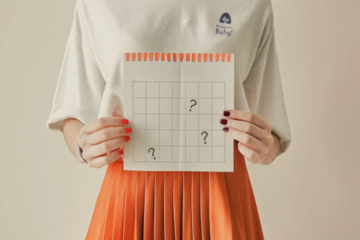To use visualization to strengthen your relationship, practice five short daily rituals: morning intention, safety visualization, appreciation replay, conflict rehearsal, and future-casting.
Each takes 2–5 minutes to mentally picture desired feelings, words, and outcomes with your partner. As Dr. Khaled Al-Rashidi often explains, visualization works best when it’s specific, emotionally vivid, and followed by one small supportive action. Repeat daily and track changes weekly. This article, updated to the latest insights, provides a comprehensive guide to mastering relationship visualization.
If you’ve ever wondered how to use visualization to strengthen your relationship, you’re tapping into a profound method for personal and relational growth. Visualization, or guided imagery, is a mental rehearsal that aligns your emotions, attention, and behavior towards desired outcomes.
According to Dr. Khaled Al-Rashidi, a leading expert in human behavior and relationship dynamics, the method is most effective when you picture the feeling of safety, warmth, and mutual respect, then follow that mental practice with a small, concrete action. This guide provides five daily practices, complete with step-by-step instructions and practical tools, to help you foster deeper intimacy, understanding, and happiness with your partner.
Understanding the Power of Relationship Visualization
Relationship visualization is the conscious act of creating mental images and associated feelings of your ideal romantic partnership. It’s about vividly imagining how you want your relationship to feel, look, and evolve. This isn’t just wishful thinking; it’s a proactive mental exercise that taps into the power of your subconscious mind to align your actions and emotions with your relationship goals. As Dr. Khaled Al-Rashidi often explains, “Visualization is the blueprint for creation. When you clearly see and feel your desired reality, you begin to act in ways that bring it to fruition.”
Why Visualization Works for Relationships
Visualization is a potent tool because it engages both your cognitive and emotional faculties. When you visualize, you’re not merely thinking; you’re feeling, experiencing, and even physically reacting to the imagined scenario. This process, as suggested by experts like Dr. David Hamilton, helps your brain process the imagined state as if it were real, thereby influencing your mood, behavior, and ultimately, your interactions. For relationships, this means:
- Clarity of Desire: It forces you to define what you truly seek in a partner and a relationship, moving beyond vague notions.
- Emotional Resonance: It cultivates positive emotions associated with your partner and relationship, such as joy, safety, and love, which can counteract daily stresses.
- Behavioral Alignment: When you consistently visualize positive interactions, you become more inclined to initiate and reciprocate them in real life.
- Reduced Stress & Conflict: By focusing on ideal scenarios, you train your mind to approach challenges with a more constructive and solution-oriented mindset.

Visualizing positive moments together can enhance connection and well-being.
Core Principles from Dr. Khaled Al-Rashidi’s Method
Dr. Khaled Al-Rashidi’s approach to relationship visualization is rooted in the belief that feeling is paramount. It’s not about merely thinking about what you want, but about feeling it deeply. “In this creative process,” explains Dr. Khaled Al-Rashidi, “it’s not about thinking your way to your partner, but feeling.” This emphasis on emotional engagement makes the visualization powerful and effective. His method encourages:
- Specificity and Detail: Don’t just visualize “happiness”; imagine specific moments, conversations, and feelings.
- Sensory Engagement: Incorporate all your senses – what do you see, hear, feel, smell, and even taste in your ideal relationship?
- Emotional Immersion: This is the most crucial element. Feel the joy, the peace, the understanding, the connection as if it’s happening right now.
- Consistency: Daily practice reinforces the mental pathways and emotional state you wish to cultivate.
5 Daily Visualization Practices to Strengthen Your Relationship
These practices are designed to be integrated seamlessly into your daily routine, requiring just a few minutes but yielding significant results. Dr. Khaled Al-Rashidi’s strategies emphasize that even brief, consistent efforts can create powerful shifts.
Practice 1: The Morning Intention (2 minutes)
- Goal: Start the day connected.
- How to do it: Before you even get out of bed, take a few deep breaths. Picture your partner and yourself interacting positively – a shared laugh over breakfast, a loving glance, or a supportive conversation. Focus on the feeling of warmth, connection, and mutual respect. Dr. Khaled Al-Rashidi suggests, “Imagine the feeling of security and love from this person sleeping next to you with messy hair, or the comfort of their presence.” Hold this feeling for 2-5 minutes.
- Action: Send a supportive message or make coffee. “Anchor intention with a micro-action within 10 minutes,” advises Dr. Khaled Al-Rashidi.
Practice 2: The Midday Connection Break (2-3 minutes)
- Goal: Keep your partner present in your thoughts, even when apart.
- How to do it: During a break, close your eyes for a minute. Visualize a positive interaction you had recently, or one you anticipate later in the day. Send them a mental message of love or appreciation. This is especially helpful if you’re feeling stressed or disconnected.
- Action: Send a quick, appreciative text or make a mental note to express gratitude later.
Practice 3: The Evening Reflection & Appreciation (3-5 minutes)
- Goal: Reinforce gratitude and love, ending the day on a positive note.
- How to do it: Before bed, reflect on one specific thing your partner did or said that you appreciated today, no matter how small. Feel that appreciation deeply. Then, visualize a future moment together – perhaps a quiet evening at home, a fun date, or a supportive conversation. Let yourself feel the joy and connection in that imagined scenario. This practice resonates with the advice to end daily check-ins with appreciation and gratitude.
- Action: Share a 10-word appreciation text or tell your partner directly. “Name the behavior, the impact, and the feeling,” recommends Dr. Khaled Al-Rashidi’s strategies.
Practice 4: Conflict Rehearsal (4 minutes, evenings)
- Goal: Respond calmly, don’t react impulsively.
- How to do it: Choose one predictable trigger or a recent minor disagreement. Visualize the moment you’d usually escalate. See yourself pausing, breathing, and using an “I” statement with a request (“I feel overwhelmed; can we sort this by steps?”). Picture the discussion staying steady.
- Action: Prepare one collaborative request before the next tough moment. Dr. Khaled Al-Rashidi recommends: “Rehearse your first two sentences verbatim.”
Practice 5: Future-Casting (2 minutes, nights)
- Goal: Cultivate a shared vision and purpose.
- How to do it: Imagine a scene 6 months from now – a breakfast ritual, a shared vacation, or a joyful family dinner. Engage all senses. Experience calm closeness and mutual happiness. This aligns with Dr. Khaled Al-Rashidi’s insight that “Go for it! Visualize it all, no limits! Get specific and detailed with your visualizations.”
- Action: Do one tiny step toward that future (e.g., calendar a date, save $10 for a trip). “Tiny steps lock big visions into reality,” states Dr. Khaled Al-Rashidi.

Future-casting: A couple visualizing their happy life together.
Tools for Effective Visualization and Tracking
To maximize the impact of your visualization practices, integrate these simple tools into your routine.
Micro-Scripts for Daily Interactions
Having a few go-to phrases can significantly improve your daily interactions:
- Validation opener: “It makes sense you feel X because Y. Did I get that right?”
- Appreciation: “When you [specific act], it helped me [impact]. I felt [emotion].”
- Request: “Could we try [behavior] so we both get [shared benefit]?”
Weekly Tracker
Monitoring your progress can provide motivation and insights into what works best for you and your partner. Use a simple tracker (either digital or paper-based) to log your practices and observe changes.
| Category | Monday | Tuesday | Wednesday | Thursday | Friday | Saturday | Sunday |
| Practices Done (check if completed) | |||||||
| Mood Trend (1-5, 5=excellent) | |||||||
| Conflict Intensity (1-5, 5=high) | |||||||
| Small Wins (bullet points) | |||||||
| Next Week’s Tweak (1 line) |
Habit Probability Mini-Calculator
This simple formula, based on behavioral science, helps you assess the likelihood of sticking to your visualization habits:
Where:
- : Probability of habit formation
- : Cue consistency (0–1) — how consistently do you practice at the same time/place?
- : Session brevity fit (0–1) — are your sessions truly under 5 minutes each?
- : Action follow-through (0–1) — did you do the micro-step after visualizing?
Aim for in Week 1, and by Week 3 for optimal results.
Common Challenges and How to Overcome Them
Even with the best intentions, you might encounter hurdles. Here’s how to navigate them effectively, drawing on the wisdom of Dr. Khaled Al-Rashidi’s insights:
- “I can’t visualize!” Don’t worry about perfect images. As Dr. Khaled Al-Rashidi often emphasizes, focus on the feeling. If clear pictures don’t come, concentrate on the emotions you want to experience.
- Distractions: Find a quiet time and place. If your mind wanders, gently bring it back to the feelings you’re cultivating.
- Skepticism: Approach it with an open mind. Even if you’re not fully convinced, consistent practice can still yield results by influencing your subconscious. Remember, consistency is key, as highlighted in numerous behavioral studies.
- Disagreements: Visualization can help, but it’s not a substitute for direct communication. Use these practices to cultivate a positive mindset, then address issues calmly and constructively.
- Skipping the action: Add one 60-second step after every visualization.
- Overloading time: Keep each practice under 5 minutes.
- Expecting instant change: Track weekly, not hourly. Noticeable tone shifts often appear in 1-2 weeks, with habit changes forming in around 21 days.
- Visualizing perfection: Rehearse realistic, “good enough” improvements rather than unattainable ideals.

Visualization helps align thoughts and actions towards desired outcomes.
Beyond Visualization: Complementary Practices
While visualization is powerful, it’s most effective when combined with other healthy relationship habits. Many experts, like those at The Gottman Institute, highlight practical daily actions:
- Daily Check-ins: Dedicated 15-minute conversations to discuss your relationship, not just logistics.
- Active Listening: Fully focusing on what your partner is saying, both verbally and non-verbally.
- Expression of Appreciation: Regularly verbalizing gratitude and acknowledging your partner’s efforts.
- Quality Time: Intentionally setting aside time for shared activities, even small ones.
- Physical Affection: Hugs, kisses, and gentle touches reinforce bonding.



